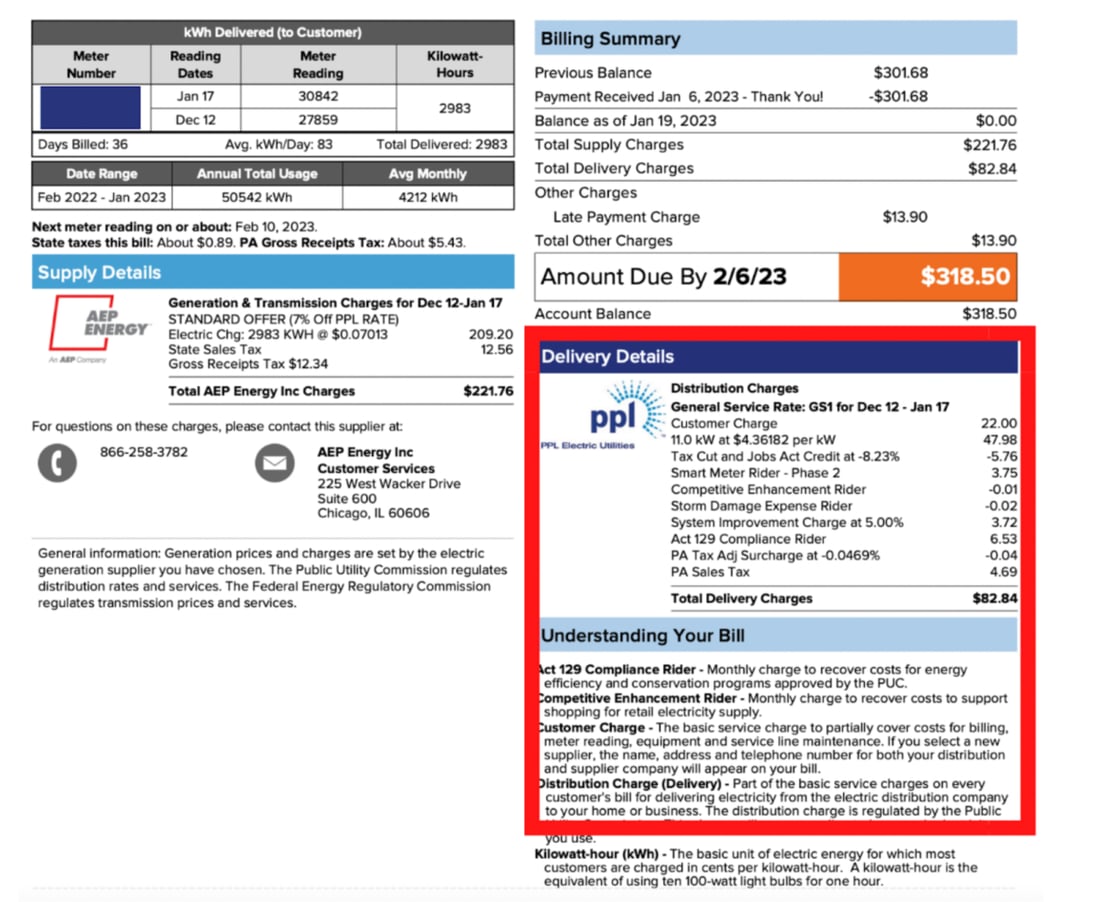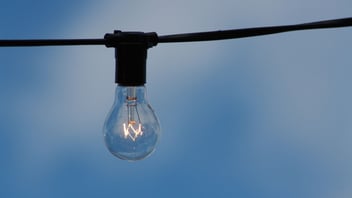How to Read Your Utility Bill: PPL Electric Utilities

If you’re a commercial or industrial customer in our Pennsylvania service area, you’re likely getting your utility bill from several companies. In this article, we’ll look at the utility bill details for PPL Electric Utilities (PPL). We’ll review what you’re paying for, break down your supply and delivery charges, and highlight where you can save. For reference, we’ve spelled out some of the typical language on your bill, like how to read kilowatt-hours (kWh).
Your PPL bill includes:
- A 10-digit account number
- Bill summary and usage summary
- Supply and delivery charges, electricity usage chart
Your monthly charges will appear on the first page for electric and gas. The circle graphs on this page display a breakdown of your usage charges, including PPL’s delivery and supply. You will also find your usage summary chart on this page.
Supply Charges
Your energy charges are divided into delivery and supply charges. Your supply charges are on page 2, under Supply Details, and consist of the actual cost of the electricity and natural gas you use. As a PPL customer, you can choose your supplier. If you get your electric supply from another company, that information will be displayed in the circle graph. The supply section includes a “Price to Compare” rate. This is the rate you pay if you do not choose a supplier and receive PPL’s default rate instead. Note: it changes every June and December.
image from PPLElectric.com
Delivery Charges
Under Delivery Details, you’ll see a full breakdown of your delivery charges on page 2. Since PPL doesn’t own the power plants where electricity is generated, PPL charges its customers monthly for the safe and reliable delivery of their power, including the infrastructure that gets it there. You’ll also see other charges like:
- Tax Cut and Jobs Act Credit – this is the monthly adjustment for federal tax changes.
- Smart Meter Rider – monthly charge to recover costs associated with the smart meter programs approved by the PUC.
- Storm Damage Expense Rider – monthly charge to recover certain costs to make repairs after major storms.

image from diversegy.com
Although your delivery charges are predetermined and static, there’s room for improvement in your supply charges depending on additional resources and how much electricity and natural gas your business consumes on a daily basis.
| Key Takeaways |
|



